It looks like you're using an Ad Blocker.
Please white-list or disable AboveTopSecret.com in your ad-blocking tool.
Thank you.
Some features of ATS will be disabled while you continue to use an ad-blocker.
share:
FeistyFemme
The carved balls has the same carved lines like some of the ancient tombs of Ireland. I wonder what they mean?
Possibly Bolas or they could have been Oracles used by Druids as the tools of 'communication' with the other side, same way we roll dice nowadays to decide our fate in games. I actually think it's both. The deformed stones and the ones with holes in could have been held in ropes and used to bring down Oxen or Reindeer. An ancient hunting technique used all over the world by the time the Northern tribes arrived.
There may to be a connection between those and the balls found within the larger circles on many of the stones. But I really don't know.

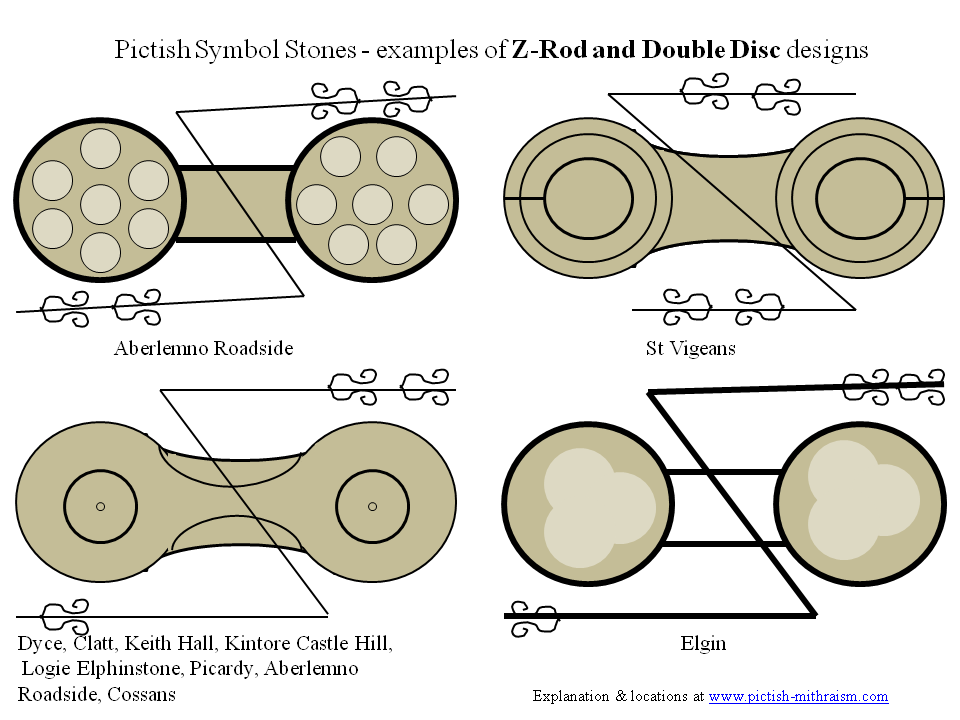
Danbones
I just had to add this little find:
Phoenicians being known as 'purple people’ by the Greeks (as the Greek historian Herodotus tells us) because the dye would stain the skin of the workers. Herodotus cites Phoenica as the birthplace of the...
www.ancient.eu.com...
relevance?
the phone- (home)-et-ians were aryan blue in budda land
so we have budda, odin, moses, our lord amen, manis-tu, etc
and we have the pictish stones and glyphs in all the places to I think ...
the sumerian symbol for an the father of the gods is two stylus marks forming a cross
So I think the pagan stones are everywhere, and the symbols go back to thier language...sumerian phonecian and the related peoples, and the language of the pre flood civilization....the Yin Yang is a good example of that older bunch's language.
Phoencians get my vote, well, half of it. This map here I just wasted an hour of my life making kind of shows where my train of thought is with regards to migration. Based on Herodotus, Ptolemy, DNA, known migration routes, other standing stones and even dare I say it? Red hair..
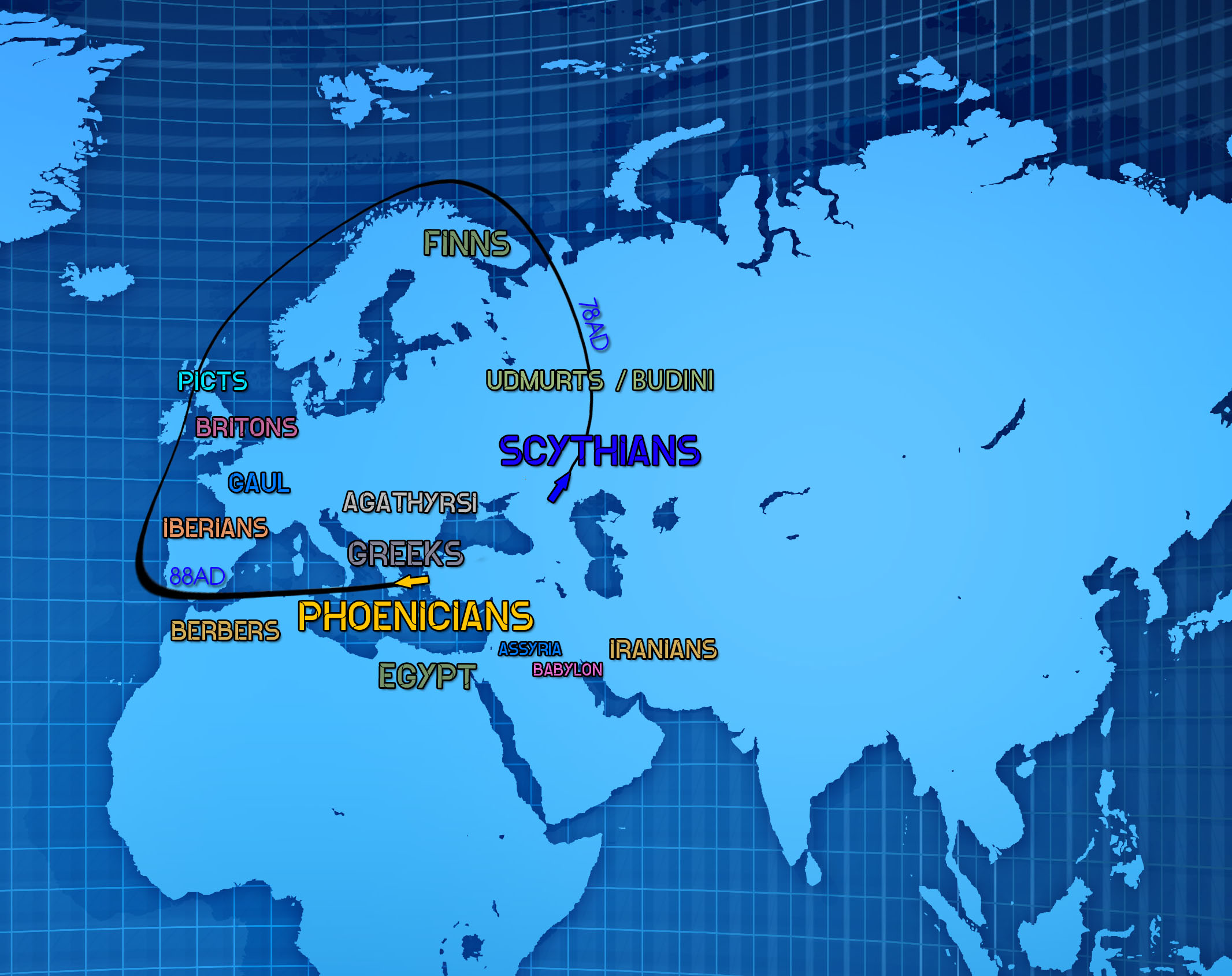
Also, according to my Peruvian friend from the Amazon, the Crescent symbol could in fact be a knife.

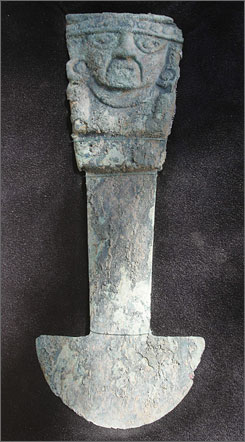
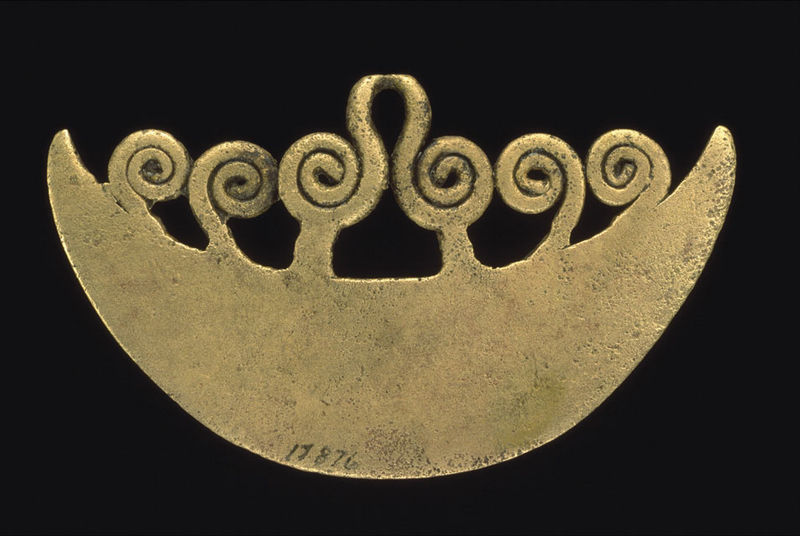
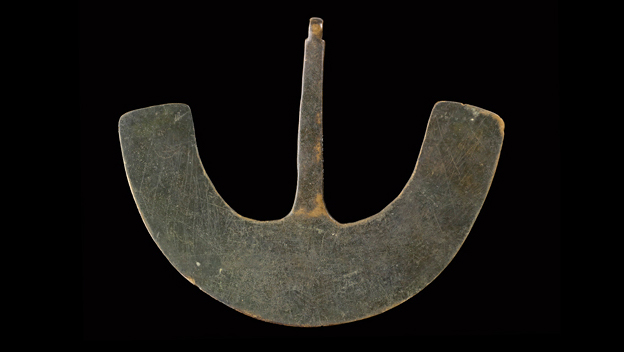




Ramcheck
The above stone has an absolutely grizzly looing horned demon the sort of thing. Its unique as these stones go.
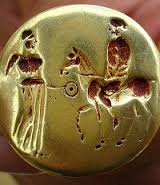
Here is Minoan/Greek coin for "mirror" similarity above.
reply to post by Ramcheck
I like the idea of them being oracles but... they were found, randomly, in amongst farmers fields mostly, and not beside any buildings. Which isn't to say they are not oracles, or that they were not dropped by clumsy druids or in fact, who knows how they got there. But as they were found scattered it might suggest they had been flung, and then lost, so Bolas is a great guess. But presumably they could also have been inscribed with 'good luck' symbols or spells, too to help with the hunt.
The fact that they are carved into the double discs of the Z rod just reinforces my belief that the Z rod somehow represents a weapon.
In fact, look at the Elgin example (bottom right) - that shows the triple 'clover' design.
Good find, Ramcheck!
Incidentally, the map was not a waste of time, nor was the three hours I spent reading about the cheese making process of the Neolithic age, last night!
Logarock has put a PhD equivalent amount of information into examining the probability that no singular culture was responsible in influencing the Picts, and that they seem to share an awful lot with much older cultures.
Possibly Bolas or they could have been Oracles used by Druids as the tools of 'communication' with the other side, same way we roll dice nowadays to decide our fate in games. I actually think it's both. The deformed stones and the ones with holes in could have been held in ropes and used to bring down Oxen or Reindeer. An ancient hunting technique used all over the world by the time the Northern tribes arrived.
I like the idea of them being oracles but... they were found, randomly, in amongst farmers fields mostly, and not beside any buildings. Which isn't to say they are not oracles, or that they were not dropped by clumsy druids or in fact, who knows how they got there. But as they were found scattered it might suggest they had been flung, and then lost, so Bolas is a great guess. But presumably they could also have been inscribed with 'good luck' symbols or spells, too to help with the hunt.
The fact that they are carved into the double discs of the Z rod just reinforces my belief that the Z rod somehow represents a weapon.
In fact, look at the Elgin example (bottom right) - that shows the triple 'clover' design.
Good find, Ramcheck!
Incidentally, the map was not a waste of time, nor was the three hours I spent reading about the cheese making process of the Neolithic age, last night!
Logarock has put a PhD equivalent amount of information into examining the probability that no singular culture was responsible in influencing the Picts, and that they seem to share an awful lot with much older cultures.
reply to post by Logarock
That stone has a mirror and what looks like the back of a mirror directly across from it. Would the Minoans have used mirrors as a symbol of beauty, vanity, scrying, otherworld, wealth?
The mirror is certainly a prominent motif for the Picts, and shown in front of Carthimandua (as part of her name). Why did the Minoans depict it?
That stone has a mirror and what looks like the back of a mirror directly across from it. Would the Minoans have used mirrors as a symbol of beauty, vanity, scrying, otherworld, wealth?
The mirror is certainly a prominent motif for the Picts, and shown in front of Carthimandua (as part of her name). Why did the Minoans depict it?
beansidhe
Incidentally, the map was not a waste of time, nor was the three hours I spent reading about the cheese making process of the Neolithic age, last night!
Logarock has put a PhD equivalent amount of information into examining the probability that no singular culture was responsible in influencing the Picts, and that they seem to share an awful lot with much older cultures.
Actually I am trying to narrow it down. The seahorse, the winged dish, personal icons protocol, the dogs of war on martial cooperatives, ect looking for them in better conjunction. However at this point to me anyway it looks like they Pict stones represent more Etruscan, the nearby kingdom of Alba in Italy, as a whole that any one other Med influence.
I read that the Etruscans were strong enough at one point to block all other Med sea/trading powers at the Pillars of Hercules. They had good enough relations with Carthage to form an alliance. They are said to be by the Greeks the royal line that fled Troy. Anyway enjoy!
beansidhe
reply to post by Logarock
That stone has a mirror and what looks like the back of a mirror directly across from it. Would the Minoans have used mirrors as a symbol of beauty, vanity, scrying, otherworld, wealth?
The mirror is certainly a prominent motif for the Picts, and shown in front of Carthimandua (as part of her name). Why did the Minoans depict it?
It has a lunar connotation, as the moon so a mirror reflecting ect.
reply to post by Logarock
Actually I am trying to narrow it down. The seahorse, the winged dish, personal icons protocol, the dogs of war on martial cooperatives, ect looking for them in better conjunction. However at this point to me anyway it looks like they Pict stones represent more Etruscan, the nearby kingdom of Alba in Italy, as a whole that any one other Med influence.
I read that the Etruscans were strong enough at one point to block all other Med sea/trading powers at the Pillars of Hercules. They had good enough relations with Carthage to form an alliance. They are said to be by the Greeks the royal line that fled Troy. Anyway enjoy!
Traders by sea, Alba Longa, good relations with Carthage, the royal line that fled Troy.
That ties in pretty neatly, I would agree!
I suppose it's also possible that where folklore records Phoenicians, it doesn't necessarily have to correspond to the group we now think of.
reply to post by Logarock
It struck me as quite a demonic face too, but I guess it could just as easily be a Scottish Wildcat. The horns could be ears.
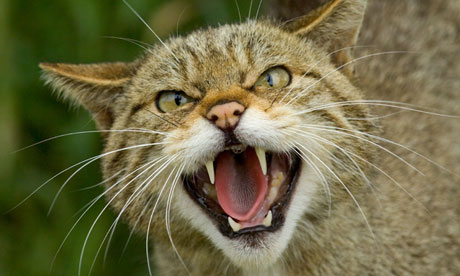
It struck me as quite a demonic face too, but I guess it could just as easily be a Scottish Wildcat. The horns could be ears.

reply to post by beansidhe
I have yet to spend three hours reading about Cheese making in Neolithic times so you're way ahead of me there
This is basically what I meant from my Map, it's not very clear, but if you follow the route of the Phoneticians you find elements of early Scots and Irish society are being picked up along the way (As well as their DNA - Berber's / Galicians) and the same with the Scythian route, in particular the red hair / blue eyes of the Budini tribes and modern day Udmurts, early Finnic people too had some input, and some others remained behind. The traits of many peoples met on the very edge of Europe (or the World, as far as they were concerned) and the rest as they say is history.
It is just a shame the Scythians left their best artists at home, their remaining standing sculptures are amazing.
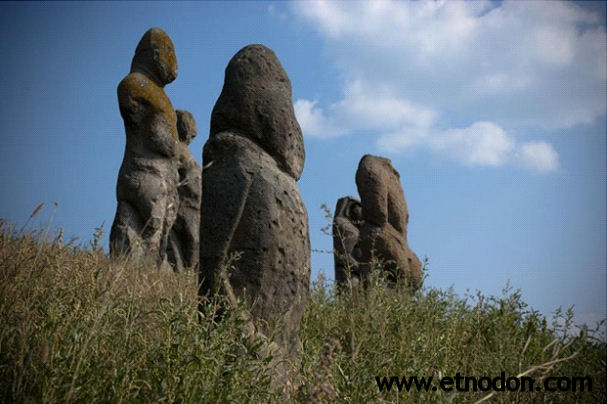

I have yet to spend three hours reading about Cheese making in Neolithic times so you're way ahead of me there
This is basically what I meant from my Map, it's not very clear, but if you follow the route of the Phoneticians you find elements of early Scots and Irish society are being picked up along the way (As well as their DNA - Berber's / Galicians) and the same with the Scythian route, in particular the red hair / blue eyes of the Budini tribes and modern day Udmurts, early Finnic people too had some input, and some others remained behind. The traits of many peoples met on the very edge of Europe (or the World, as far as they were concerned) and the rest as they say is history.
It is just a shame the Scythians left their best artists at home, their remaining standing sculptures are amazing.


reply to post by Ramcheck
There's a lot of folklore speaks about the Phoenicians, although Logarock's case for Etruscans and the Carthaginian connection is compelling, particularly if Cartimandua is the basis for the mythical Guinevere, whose body was said to be under the Meigle 2 stone!
Confusing, I know.
However, I found this information, quite unexpectedly, hidden away:
www.aberdeenshire.gov.uk... 10
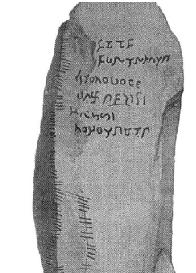
Phoenician? Etruscan?
How infuriating to have a Rosetta Stone and not know either language!
Etruscan
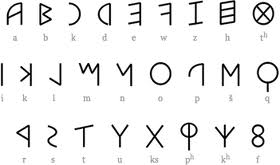
Phoenician
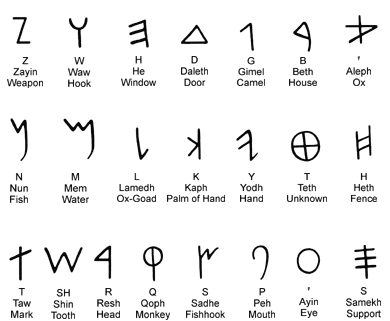
(And to cut a long story short, they ended up making hard cheese like parmesan, which has very little lactose, as they were lactose intolerant - 3 hours of your life saved!)
There's a lot of folklore speaks about the Phoenicians, although Logarock's case for Etruscans and the Carthaginian connection is compelling, particularly if Cartimandua is the basis for the mythical Guinevere, whose body was said to be under the Meigle 2 stone!
Confusing, I know.
However, I found this information, quite unexpectedly, hidden away:
Site Form Standing Structure
Site Condition Complete 2
Details Two sculptured stones. One stone is roughly pillar shaped of blue-grey gneiss, Pictish Class I with notched double disc and a serpent with Z-rod (the serpent has scales). The other stone, the 'Newton Stone', is of blue gneiss and is around 2.03m high. It has 6 horizontal lines of characters inscribed at the top which are thought to be a debased Roman script, the meaning of which is unknown. To the left of this, down the side of the stone, runs an ogam inscription. It contains a personal name (Ethernan) and additional material that is either incomplete or not wholly legible. An incised 'kidney-bean' shape was observed on the lower side of this stone, identified as a possible Pictish mirror symbol.
www.aberdeenshire.gov.uk... 10

Phoenician? Etruscan?
How infuriating to have a Rosetta Stone and not know either language!
Etruscan

Phoenician

(And to cut a long story short, they ended up making hard cheese like parmesan, which has very little lactose, as they were lactose intolerant - 3 hours of your life saved!)
reply to post by beansidhe
the horns - horus?
eta
a little more on the picts and the tin mines:
www.jrbooksonline.com...
here we go:
www.jrbooksonline.com...
the horns - horus?
www.minoanatlantis.com...
Sir Arthur Evans believed the Minoan “djew-like” symbol represented the horns of the sacrificial bull and named it the “horns of consecration” (Banou, 2008). By the Middle Minoan II (MM II) period this “sun symbol” could commonly be found throughout Crete on altars and the rooftops of architectural structures.
eta
a little more on the picts and the tin mines:
The name of the aborigines, unfortunately, is not preserved in the existing versions; but we have seen that these aborigines, whose extant skeletal and other remains date back to the Old Stone Age, were clearly the Picts or "British Celts." And a memory of them seems to be preserved in the Scottish version of the Brutus legend, which places the newly-arrived Brutus, as we have seen, on "The Sea of Icht (or of the Picts)," when he "banishes" from the island his "big brother," his kinsman the Tiberian Sylvius Alba and his people, who had preceded Brutus in the possession of the tin-mines and in the domination of the island. And significantly the traditional place where Brutus landed is still reputed the especial haunt of the earth-dwelling dwarfish "Pixies," who, we have seen, are a memory of the earth-burrowing Picts.
www.jrbooksonline.com...
here we go:
THE AMORITE PHOENICIAN TIN MINES OF CASSITERIDES OR CORNWALL (?) REFERRED TO ABOUT 2750 B.C. BY SARGON I. OF AKKAD, & KAPTARA OR "CAPHTOR" AS ABDARA IN SPAIN.
www.jrbooksonline.com...
edit on 21-2-2014 by Danbones because: (no reason given)
I mentioned ages ago that the Greeks had sailed round the British Isles...doh...you guys have just reminded me it was actually the Phoenicians. Memory
playing tricks on me!
The Newton Stone has been translated according to this from Waddell... www.jrbooksonline.com...
There is a little swastika in the middle of the letters and it is a decidedly Eastern symbol. Nothing to do with the Nazis, as I'm sure you know. It's definitely not a garbled form of latin script as has been stated officially!
I'm very intrigued by this now!
The Newton Stone has been translated according to this from Waddell... www.jrbooksonline.com...
There is a little swastika in the middle of the letters and it is a decidedly Eastern symbol. Nothing to do with the Nazis, as I'm sure you know. It's definitely not a garbled form of latin script as has been stated officially!
I'm very intrigued by this now!
reply to post by AtroxLux
Me too!
Ah, it's a swastika, well spotted - I thought it was a letter and I couldn't find it in an alphabet anywhere. I couldn't find that sideways 'S' either, but then I'm not a linguist, just a googler!
I prefer to think it was raised to a bloke called Bil (or Bill)!
I suppose it's Waddell's insistence on calling them Aryan Phoenicians that gets peoples hackles up, with the connotations that may imply.
Wow, good find AtroxLux!
Me too!
Ah, it's a swastika, well spotted - I thought it was a letter and I couldn't find it in an alphabet anywhere. I couldn't find that sideways 'S' either, but then I'm not a linguist, just a googler!
Thus this bi-lingual inscription records that: "This Sun-Cross (Swastika) was raised to Bil (or Bel, the God of Sun-Fire) by the Kassi (or Cassi-bel[-an]) of Kast of the Siluyr (sub-clan) of the "Khilani" (or Hittite-palace-dwellers), the Phoenician (named) Ikar of Cilicia, the Prwt (or Prat, that is 'Barat' or 'Brihat' or Brit-on)."
I prefer to think it was raised to a bloke called Bil (or Bill)!
I suppose it's Waddell's insistence on calling them Aryan Phoenicians that gets peoples hackles up, with the connotations that may imply.
Wow, good find AtroxLux!
reply to post by Danbones
'The Receptive Crescent' from Carthage
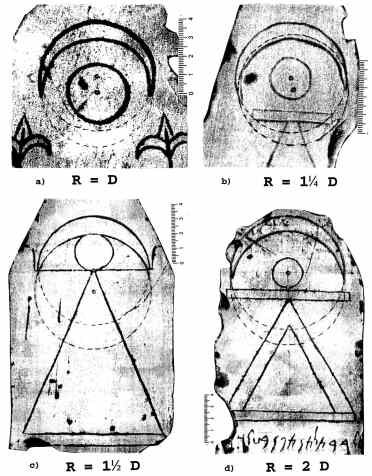

The picts' crescent and V rod.

It's all a bit of a coincidence! I can't help thinking that the V-rod is showing a compass, for drawing circles, particularly in the more stylised stones like this:
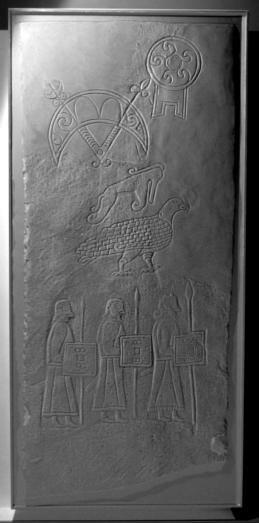
Sir Arthur Evans believed the Minoan “djew-like” symbol represented the horns of the sacrificial bull and named it the “horns of consecration” (Banou, 2008). By the Middle Minoan II (MM II) period this “sun symbol” could commonly be found throughout Crete on altars and the rooftops of architectural structures.
'The Receptive Crescent' from Carthage


The picts' crescent and V rod.

It's all a bit of a coincidence! I can't help thinking that the V-rod is showing a compass, for drawing circles, particularly in the more stylised stones like this:

Just when it all seems to be slowly falling into place, I came across this stone which I hadn't looked at carefully before. Logarock's going to hunt
me down and punch me repeatedly for even more diversions, I know, but what is this?
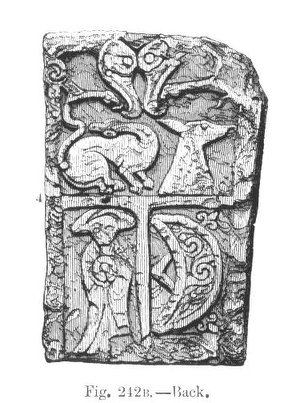
Bottom left of the stone, there seems to be a horned thing in a dress. The stone is only categorised under 'deer' on the database, with no mention of it. I've never seen it before on a stone.

Bottom left of the stone, there seems to be a horned thing in a dress. The stone is only categorised under 'deer' on the database, with no mention of it. I've never seen it before on a stone.
beansidhe
reply to post by Danbones
Sir Arthur Evans believed the Minoan “djew-like” symbol represented the horns of the sacrificial bull and named it the “horns of consecration” (Banou, 2008). By the Middle Minoan II (MM II) period this “sun symbol” could commonly be found throughout Crete on altars and the rooftops of architectural structures.
'The Receptive Crescent' from Carthage
The picts' crescent and V rod.
It's all a bit of a coincidence! I can't help thinking that the V-rod is showing a compass, for drawing circles, particularly in the more stylised stones like this:
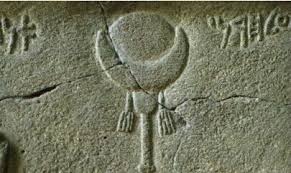
Phoenician.
IMHO
According to Waddel that would be the bull god name/representation of king minos, menes manistu's son...those animal headed people generally are royalty of sargon/menes' line it appears...the minotaur in the maze is a story about him
the compass:
primitive masons maybe like in my AV
there are the cross, stars, and pyramids, and half the cross, is a quadrant, in 2d art it also is the compass
The bottom pic looks like a rod they used to sight straight lines with when building cathedrals BTW as I understand it they would shoot stars to line stuff up.
Thats why things they built are alined with stars
the tassels are the plumb lines that determin if the rod is exactly verticle when being used
According to Waddel that would be the bull god name/representation of king minos, menes manistu's son...those animal headed people generally are royalty of sargon/menes' line it appears...the minotaur in the maze is a story about him
the compass:
primitive masons maybe like in my AV
there are the cross, stars, and pyramids, and half the cross, is a quadrant, in 2d art it also is the compass
The bottom pic looks like a rod they used to sight straight lines with when building cathedrals BTW as I understand it they would shoot stars to line stuff up.
Thats why things they built are alined with stars
the tassels are the plumb lines that determin if the rod is exactly verticle when being used
edit on 22-2-2014 by Danbones because: (no reason
given)
edit on 22-2-2014 by Danbones because: (no reason given)
edit on 22-2-2014 by Danbones because: (no reason
given)
edit on 22-2-2014 by Danbones because: (no reason given)
new topics
-
Simple Thanksgiving
Food and Cooking: 6 hours ago -
Trump could make a peaceful American Revolution
US Political Madness: 9 hours ago -
Trump Presidential Transition Team will not use GSA or Government entities to come to DC
US Political Madness: 9 hours ago -
Mind Blowing Cave under someones land
Fragile Earth: 10 hours ago -
The Party of Peace - Trump Cabinet Picks Targeted with Death Threats
US Political Madness: 11 hours ago
top topics
-
V.P. Kamala Harris releases a video and nobody understands why
US Political Madness: 14 hours ago, 16 flags -
The Party of Peace - Trump Cabinet Picks Targeted with Death Threats
US Political Madness: 11 hours ago, 15 flags -
Mind Blowing Cave under someones land
Fragile Earth: 10 hours ago, 15 flags -
Trump could make a peaceful American Revolution
US Political Madness: 9 hours ago, 14 flags -
Trump Presidential Transition Team will not use GSA or Government entities to come to DC
US Political Madness: 9 hours ago, 13 flags -
Simple Thanksgiving
Food and Cooking: 6 hours ago, 8 flags
active topics
-
Simple Thanksgiving
Food and Cooking • 26 • : Station27 -
Mind Blowing Cave under someones land
Fragile Earth • 16 • : RickyD -
The Party of Peace - Trump Cabinet Picks Targeted with Death Threats
US Political Madness • 27 • : DBCowboy -
President-Elect DONALD TRUMP's 2nd-Term Administration Takes Shape.
Political Ideology • 256 • : WeMustCare -
-@TH3WH17ERABB17- -Q- ---TIME TO SHOW THE WORLD--- -Part- --44--
Dissecting Disinformation • 3389 • : Crazierfox -
Trump Presidential Transition Team will not use GSA or Government entities to come to DC
US Political Madness • 11 • : WeMustCare -
I thought Trump was the existential threat?
World War Three • 113 • : WeMustCare -
Mood Music Part VI
Music • 3719 • : MRTrismegistus -
Tunnels of Terror: The Cryptid Connection The Why Files
Cryptozoology • 5 • : TheMisguidedAngel -
V.P. Kamala Harris releases a video and nobody understands why
US Political Madness • 75 • : matafuchs
